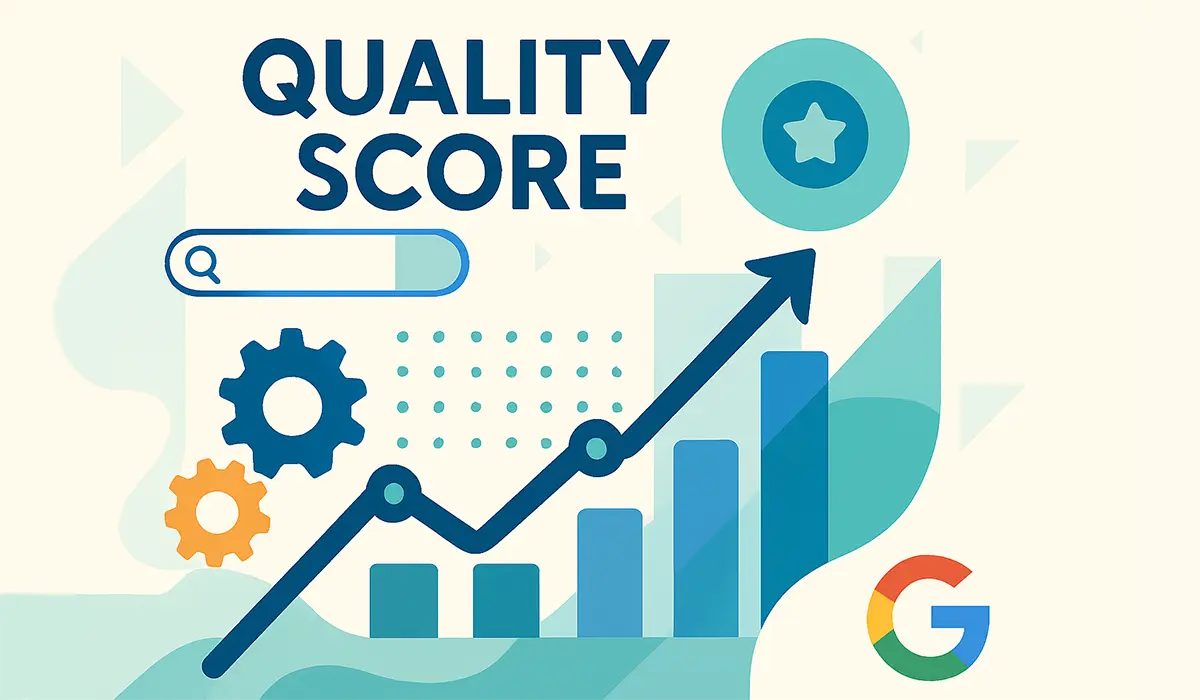If you’re running Google Ads campaigns, you’ve probably come across the term Quality Score. But what exactly is it, and why should it matter to your advertising strategy? Here, we’ll break down what Quality Score in Google Ads is, how it’s calculated, why it matters, and most importantly—how you can improve it.
What Is Quality Score?
Quality Score is a metric used by Google to determine the relevance and quality of your ads, keywords, and landing pages. It’s scored on a scale from 1 to 10, with 10 being the highest possible score. The higher your Quality Score, the better your ad performance and the less you may pay per click (CPC).
Google uses Quality Score to help ensure that users see the most relevant ads. This scoring system encourages advertisers to create high-quality campaigns that deliver value to users—not just whoever is willing to spend the most money.
See how Click Return can drive more traffic to your website
- Social Media Marketing: Amplify your key message, increasing traffic and sales.
- Search Engine Optimisation: Grow your SEO traffic and enjoy visible results.
- Pay Per Click Advertising: Smart paid strategies with guaranteed ROI.
Why Is Quality Score Important?
Your Quality Score directly impacts your ad rank and cost-per-click. Here’s how:
- Ad Rank: Google uses Quality Score (along with your bid) to determine where your ad appears on the search engine results page (SERP).
- Cost-Per-Click (CPC): A higher Quality Score can lower your CPC. This means you can spend less money for better ad placement.
- Return on Investment (ROI): Improved Quality Scores typically lead to higher click-through rates and conversions—maximising your ROI.
In short, a good Quality Score means better ad placement, lower costs, and more effective campaigns.
What Factors Affect Quality Score?
Google considers several factors when calculating your Quality Score. These include:
1. Expected Click-Through Rate (CTR)
This is an estimate of how likely your ad is to be clicked when shown. A higher CTR suggests your ad is relevant and engaging to users.
2. Ad Relevance
This measures how closely your ad matches the user’s search intent. If your keywords align well with your ad copy, your ad relevance will be higher.
3. Landing Page Experience
Once users click your ad, where do they land? Google evaluates whether your landing page provides a good user experience, is relevant to the search term, and loads quickly.
These components are rated as “Below Average,” “Average,” or “Above Average” in your Google Ads account for each keyword.

How to Improve Your Google Ads Quality Score
Improving your Quality Score requires a combination of strategic planning, optimisation, and ongoing analysis. Here are actionable steps you can take:
1. Optimise Your Keyword Selection
Start by targeting the most relevant and specific keywords. Avoid overly broad terms that don’t align with your product or service. Use tools like Google Keyword Planner to find high-intent keywords with a healthy balance of search volume and competition.
2. Improve Your Ad Copy
Your ad copy should closely match your keywords and provide a compelling reason for users to click. Include your target keywords in the headline and description, and use a clear call to action (CTA) to boost CTR.
3. Align Your Landing Pages
Your landing page must match the ad and keyword intent. Ensure the page is fast-loading, mobile-friendly, and contains relevant content that matches the user’s query. A well-optimised landing page not only helps Quality Score but also improves conversion rates.
4. Structure Your Campaigns Effectively
Break your ad campaigns into tightly themed ad groups. For example, instead of grouping all your products into one campaign, segment them into smaller groups with focused keyword sets. This increases ad relevance and makes management easier.
5. Use Negative Keywords
Prevent your ads from appearing on irrelevant searches by adding negative keywords. This not only protects your budget but also boosts your CTR by ensuring your ads only show to the most relevant users.
6. Monitor and Test Regularly
Use A/B testing to refine your ad copy and landing pages. Monitor your Quality Scores regularly and look for patterns—do certain keywords always underperform? Are certain ad groups lagging behind? Data-driven adjustments are key to long-term improvement.
How Long Does It Take to Improve Quality Score?
Improving your Quality Score isn’t always instant. Changes to ad copy or landing pages may take a few days or even weeks to reflect in your scores. The key is consistency—continually optimise based on data and user behaviour.
See how Click Return can drive more traffic to your website
- Social Media Marketing: Amplify your key message, increasing traffic and sales.
- Search Engine Optimisation: Grow your SEO traffic and enjoy visible results.
- Pay Per Click Advertising: Smart paid strategies with guaranteed ROI.
Final Thoughts
Quality Score plays a pivotal role in the success of your Google Ads campaigns. By understanding the key factors and taking deliberate action to improve them, you can lower your costs, improve your ad rankings, and drive better results from your marketing spend.
Focus on relevance, user experience, and continuous optimisation. Over time, these efforts will pay off in the form of higher-performing ads and a better return on investment.
Need help improving your Google Ads campaigns? Contact our PPC experts today and get a free audit!
For information on Google Pay Per Click Advertising check out our PPC Marketing Services.
To obtain more information on our Search Engine Optimisation Consultants check out our SEO Services.
For information on Website Design and Build check out our website design packages.

